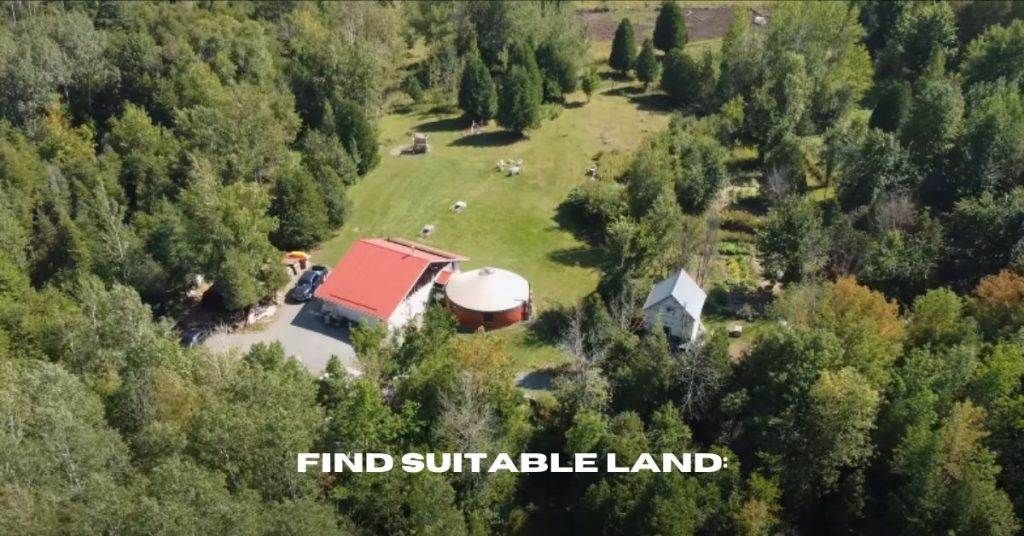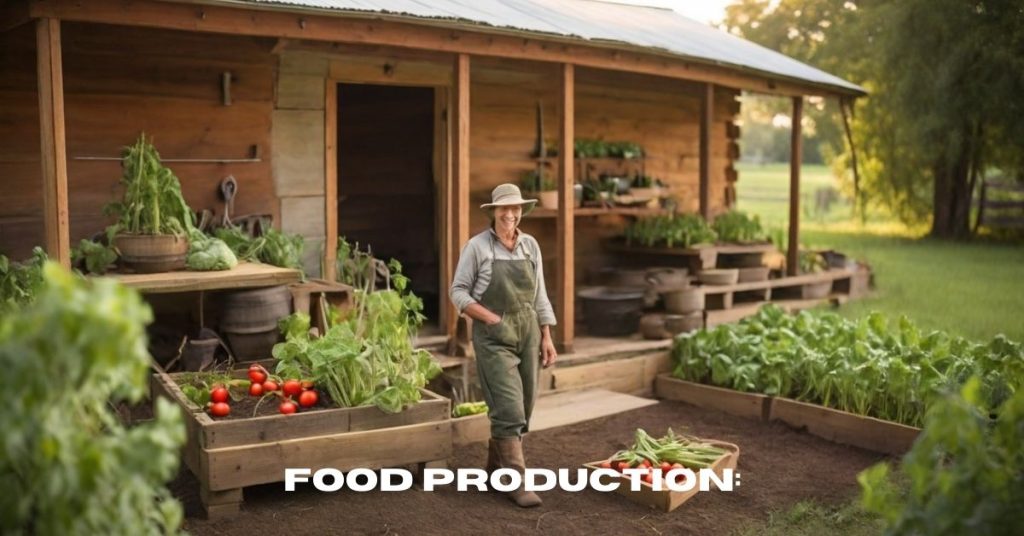Homestead Living: Living Traditions
Homestead living is unlike any other kind of lifestyle. No matter how experienced or inexperienced you are as a homesteader, there’s always room for improvement in your simple life! Since Little House Living is a homesteading site, we support straightforward, economical, and environmentally friendly living!

These are some of the tricks we employ on our farm to cut costs, simplify our lives, or just solve problems!
Homestead Living Overview
| Category | Description |
|---|---|
| What is it? | A platform dedicated to promoting and supporting the modern homesteading movement. |
| Mission: | To inspire and empower people to live healthier, simpler, and more sustainable lives through homesteading. |
| Website: | People are interested in living a more self-sufficient, sustainable, and connected life, regardless of their experience level. |
| Products: | * Homestead Living Magazine: A monthly print and digital magazine featuring practical tips, articles, and stories from experienced homesteaders. * Website: Offers articles, videos, and resources on various homesteading topics. * Annual Print Collector’s Edition: A curated collection of the best content from the magazine. * Books: Guides and other resources related to homesteading. |
| Target audience: | People interested in living a more self-sufficient, sustainable, and connected life, regardless of their experience level. |
| Values: | Sustainability, self-reliance, community, simplicity, and healthy living. |
| Key features: | * Expert advice: Articles and stories from experienced homesteaders. * Practical tips: Guides on gardening, animal husbandry, food preservation, and other homesteading skills. * Inspiration: Stories of real people living homesteading lifestyles. * Community: Online forum and social media groups for connecting with other homesteaders. |
| Benefits: | * Learn practical skills for self-sufficiency. * Gain inspiration and motivation for your homesteading journey. * Connect with a supportive community of like-minded individuals. * Live a healthier, more sustainable lifestyle. |
Additional Notes:
- Large rural property owners are not the only ones who may live on a homestead. Homesteading ideas may be applied to the lives of even city people.
- The site provides both novice and seasoned homesteaders with a wealth of materials.
- Despite becoming a for-profit company, Homestead Living’s goal and basic principles continue to guide its operations.
Living off the land, being self-sufficient, and fostering a relationship with the natural world are all aspects of the homesteading lifestyle. The people in the data set have lived off the grid for 13 years, with seven of those years spent homesteading. Although they now reside in a yurt, they intend to move into a strawbale home. The following is a detailed guide on living on a homestead, based on the information provided:
Find Suitable Land:

Find a plot of property that meets your requirements and preferences. The majority of the 68 acres that the couple in the data purchased was a watershed that was designated by the province.
Financial Planning:
Evaluate your financial circumstances. After purchasing the site with family loans, the couple had to take out further loans to cover the early expenditures of infrastructure. Having a financial strategy in place is essential.
Build Infrastructure:

Begin constructing the infrastructure that is required. In their instance, they first constructed a yurt before adding a strawbale home. The strawbale house has a garage, utility room, bathroom, and kitchen, among other uses.
Off-Grid Energy:

Accept living off the grid while using a green energy source. The pair uses solar electricity, initially installing four and then adding nine panels. For storage, they updated to lithium-ion batteries.
Water Collection and Usage:

Gather rainfall for domestic usage. Rainwater is collected by the couple from their steel roof, stored in bulk tanks in the garage, and then filtered to make it safe to drink.
Food Production:

Create gardens to produce veggies. In their instance, the gardens are managed by a single individual who concentrates on cultivating and canning vegetables for year-round use. For eggs, meat, milk, cheese, and honey, they also keep pigs, goats, sheep, rabbits, and bees.
Heating and Cooking:
Make use of several heating techniques. The pair uses a wood burner in the yurt and a wood-fired indoor boiler for in-floor heating. In addition, they utilize propane for cooking and instantaneous hot water.
Waste Management:
For sustainability, think about composting toilets. After difficulties in getting permits, they ended up with a standard septic system instead of the composting toilets they had originally planned. A vital component of homesteading is waste control.
Community Building:
Seek companions and supporters who share your beliefs. To encourage local sustainability, the pair has discovered neighbors who are enthusiastic about producing veggies for one another.
Continuous Learning and Adaptation:
Homesteading necessitates ongoing education and adjustment. The pair stresses the significance of maintaining energy efficiency, being aware of water shortages, and continuously enhancing their systems.
Homestead Life in Spring
The homestead comes alive in the spring! Baby animals play in the farmyard, seedlings unfold in the garden, and maple sap turns into golden syrup as it simmers. As foragers pick wild greens and the community comes together to plant and exchange knowledge, bees dance in flowering orchards.
On the farm, spring is a bright tapestry of regeneration, hard labor, and the promise of a bountiful harvest, woven with the spirit of connection and the expectation of summer’s warmth. However, it is not without its work, fixing fences and tending to seedlings.
A Week in Our Homestead Life in Spring
Allow me to take you on a genuine springtime homestead week.
Livestock
Dan, my spouse, is outside completing the morning duties. He uses our tractor to transfer a bale of hay from our pile to the cows and works to clear snow from the most recent snowfall. Inside, I concentrate on our weekly baking, making week’s worth of breads and snacks while cooking the family’s breakfast. The older kids are downstairs playing together, while the baby is strapped onto my chest in her wrap.
Dan discovers the cow in the field is squatting and has a bloody discharge when he’s shoveling snow off the driveway. When he arrives to pick me up, we discover she is six weeks early in delivery. We strive to maintain our optimism even though we both know this is horrible.
After Dan helps the cow inside the barn, we witness her give birth to the premature, dead calf. It’s terrible—nothing for which we were ready on that chilly March morning. We’re dissatisfied with the situation overall, but we’re also saddened by the loss of our cow and the death of a young calf. We’re also ill-prepared.
We are now confined to milking twice a day, every day, as we do not have a baby to keep up with the milk. We talk about the possibilities available to us going ahead.
We inquire with other nearby farmers and discover that there is a week-old calf up for purchase. This is fortunate since we don’t want to milk her every day or twice a day, and she won’t let us down for that. Dan visits the farm and, to the cow’s grateful acceptance, takes home a Holstein steer.
Before long, we have yet another issue: the cow refuses to give up, and one calf is unable to keep up with our cow’s milk production. We then locate a small Angus heifer calf from a different farm to add to the mix. She’s adorable and feisty, and our cow welcomes her once more. We now have to keep an eye on the cow to make sure she stays healthy and clean (passing her afterbirth).
Maple Syrup
Even though we’ve been itching to go outside and tap our trees for our small-batch maple syrup business, the amount of snow and the temperature have prevented the trees from producing enough sap for cooking.
We have received almost eighteen inches of fresh snow in March alone. We prepare our supplies for the moment, ensuring sure we have a enough supply of bags, bag holders, and taps. Dan leaves for the hardwood hill to begin plow work on the trail we will be walking up several times over the next few weeks.
The trees should eventually begin to perform well when the temperature rises into the upper 30s and 40s during the following few weeks.
Everyday Homestead Life
Before the snow melts and our route turns muddy and sloppy, we like to spend many afternoons strolling in the woods together. I adore having the opportunity to stroll in the peaceful forest, therefore this is one of my favorite parts of the day.
In the late afternoon, we built a little bonfire in the backyard using the s’mores items I had brought home from the supermarket. An owl swooped in and settled in the tree next to us while we were sitting around the fire. For some minutes, we gazed at the owl and it returned our gaze before flying off. The cold of the night brought us back inside as the stars in the sky started to shine brightly.
For us, spring is a very lovely time of year because everything begins to reanimate. There will be spring peepers to listen to, puddles to play in, and a breeze that feels warm soon. In the spring, a lot of time is spent outside. Spring eases us into the labor that lies ahead, and the hectic season is only getting started.
Homestead Life in Summer
Summertime on the homestead is a food-filled time! The gardens are thriving and the Earth has come back to life. The summer months on a homestead are a little different from the spring because of the longer days and higher temperatures, which allow for greater growth and activity.
Livestock
Summertime brings a flurry of activity to the farmhouse! While they graze on the pasture, calves rush around their moms. With joy, the hens roam the yard, pecking at the bugs. The meat chickens are kept on the pasture as well, and they are rotated daily to graze on fresh grass.
The pigs in the pigpen are rooting enthusiastically as they begin to acclimate to their new surroundings. Every day, extra garden leftovers are tossed over the fence to them, which they find enjoyable. With fences, they will require maintenance following the winter and spring seasons.
Even if there is an abundance of food available to the animals right now, preparation is always required. For the animals’ winter feed, you’ll need to make hay; if you’re not up to the task, you’ll need to hire someone else. Living on a homestead entails anticipating the future while appreciating the present.
Garden
The garden takes center stage in the summertime farmhouse lifestyle. A daily regimen includes planting, weeding, watering, and harvesting. Make time each day to spend in the garden. You’ll be in the garden a lot in the early summer, pulling weeds in your freshly planted garden and doing your hardest to give the weak plants you began back in March a chance to thrive in the wild.
You should find yourself pulling weeds less frequently and harvesting more as the summer progresses and the plants get more established. Greens, peas, and radishes will be first, then strawberries and blueberries.
Then the beans will appear amid summer, along with tomatoes, peppers, cucumbers, and zucchini. Potato bugs will begin to cover the potatoes, and you and the kids will discover that pulling them off will become a nightly ritual in the garden.
It will take a lot of time to collect berries because raspberries ripen in July and blackberries in August. We nearly always take the four-wheeler deep into the woods to the areas of wild berries on my grandpa’s acreage down the road because we’ve discovered a wild patch there. Even if our tummies are often fuller than our buckets, the event leaves us with enduring memories.
Everyday Homestead Life
If there’s nothing to scan or plants to weed, heading to the closest lake and having a swim is a great way to pass the time in the afternoon. Connecting over a campfire with friends creates opportunity. And whenever I have the chance, I truly like listening to the sounds of summer while sitting on the front porch.
There are a plethora of sounds, with several creatures vocalizing their hearts out into the warm twilight light. Subsequently, the stars emerge, inspiring awe. Now is a great time to be outside.
Homestead Life in Fall
Homestead life remains centered on conserving for the off-season as September approaches. It’s a busy time of year, full of work and changes as fall harvests need to be stored for the winter and adjustments with the animals will begin.
Livestock
The property will be cleared of any animals slated for slaughter in the fall. To feed the family over the winter, slaughtered pigs, beef cattle, and meat birds are all stored in freezers. It’s not an easy task, and you will undoubtedly experience the weight of reality as some animals leave the property.
Although it might be easier to recall that the animals had a happy and healthy existence, the fact is that killing creatures that you have worked so intimately with will probably never become any easier. Raising and tending to creatures that may eventually be used as food is an intriguing endeavor, and I must admit that I’m still not very good at accepting that fact.
Dan will go hunting in the woods and bring home deer meat for the winter in addition to the foods he has collected himself. Any meat he harvests is appreciated by us as it has been cared for by Mother Nature rather than by humans.
As the days become shorter, the hens will begin to lay fewer eggs. There will be a shift in the wild creatures as well, with many moving to warmer climates. A large portion of the residents will be occupied preparing a winter food stockpile. Mice look for warm locations to create a nest, and squirrels accumulate food.
Garden
Now that the garden is winding down a bit, you are concentrating on winter squashes and root vegetables. Potatoes will be gathered, and onions will cure on the porch. Searching for potatoes is like going on a treasure hunt! In winter, pumpkins will be harvested, roasted, and pureed for use in pies and muffins.
Homestead Living The apples follow. You’ll most likely be working late into the night to prepare applesauce or chop apples for freezing throughout the off-season. Leaving food to spoil feels like such a waste; fruits and vegetables are all true gifts from God. Falltime on the homestead still focuses a lot on food preservation.
Everyday Homestead Life
Walking in the woods in search of lovely leaves and food for foraging is a great way to kill time when you have spare time. Since a lot of time is now being spent getting ready for winter, there isn’t as much spare time as there once was. During this busy season, hunting, canning, and harvesting are major activities.
Homestead Life in the Winter
Rest, at last, for the tired! Wintertime on the homestead is a time for relaxation, just like in the natural world. Overall, this is a slower period, even if there is still work to be done. On the homestead, life feels distinct from all other seasons. There are many days with an overcast sky, and the nights are gloomy and chilly.
Livestock
Winter livestock tasks are more difficult since you have to worry about frozen water, warm housing, and supplies for the animals to eat and sleep on. The largest problem facing cattle in the winter is keeping the water frozen and available for the animals. Taking care of the hay and bedding is another task.
Homestead Living Since they can’t search for food on their own in the winter, animals need on a sufficient supply to stay healthy. Heat production in the body during this phase requires a lot of energy. During this period, the animals are more concerned with living than with sharing; the hens will lay fewer eggs.
Garden
There is nothing to pick outside now that the garden is asleep. Instead, you’ll discover that in the fall, you’re preparing filling meals with the food you’ve worked so hard to preserve. Meats and other preserved veggies will be a part of your meals, along with root crops like potatoes, carrots, and onions. The fruits you have preserved, such as the applesauce and berries, are the only ones that are accessible from the farmhouse.
Everyday Homestead Life
Wintertime brings quieter living and more time for hobbies like baking and crafts. I enjoy spending a lot of time in the kitchen making treats for my loved ones. I can also take out my paints and paint images or work on a sewing project at this peaceful time of year. It’s particularly unique in that it’s peaceful and family-oriented.
When the weather permits, we go outside to explore the enchantment of the snow-covered surroundings. This is a really lovely time of year that isn’t often given the credit it deserves!
Big Takeaways About Homestead Life
The most important thing to keep in mind regarding life on a farm is that everyone’s experience will be unique. In our world, if something goes wrong or if we decide not to cultivate something, we can always go to the shop. Homestead living is far less stressful now than it was for our pioneer predecessors because modern homesteaders may choose to be as self-sufficient as they’d like to be.
The fact that homestead life changes with the seasons is another important point to consider. Every season has significance and a purpose, and homestead life evolves to meet the demands of the moment.
Because the seasons demand and provide different things, homestead life in the winter will appear very different from that in the summer. Living in harmony with the Earth’s changes is an exquisite way of life. The changing of the seasons serves as a helpful reminder that nothing lasts forever and that time is passing.
Finally, keep in mind that although living on a farm is purposeful, happy, and healthy, it’s also rife with difficulties, hardships, and inevitable pain. What counts most is how one responds to and confronts such issues, as well as what steps one takes to proceed.
Every homesteader must determine whether the hardships, difficulties, and pain are worth carrying on with the homestead way of life. It is worth it for us.
Most Frequently Asked Questions!
What is homesteading?
The lifestyle of homesteading places a strong emphasis on sustainability, self-sufficiency, and a deep relationship with the land. It frequently entails pursuits like farming, animal husbandry, and food production.
How much land do I need for a homestead?
A homestead’s land requirements might change based on several variables, including geography, climate, and personal objectives. While some homesteaders may need bigger amounts of land, others may be content with a few acres.
What skills do I need for homesteading?
Homesteaders frequently acquire expertise in woodworking, food preservation, gardening, and animal husbandry, among other practical talents. It is also helpful to learn about resource management, permaculture, and sustainable methods.
Can I homestead in an urban area?
Yes, an increasing trend inside city bounds is urban homesteading, where people practice small-scale self-sufficiency. Composting, hen farming, and container gardening may fall under this category.
How do I start homesteading?
Planning and steady implementation are necessary when starting a homestead. Start by acquiring the necessary knowledge, making reasonable objectives, and progressively integrating sustainable lifestyle choices into your daily routine.
What challenges do homesteaders face?
Managing the unpredictable weather, controlling pests, and the learning curve of different homesteading chores are common problems. Time management and financial concerns may also play a role.
Is homesteading a sustainable lifestyle?
When homesteading is done with an intentional effort toward resource conservation, organic farming, and environmentally friendly methods, it may be a sustainable way of life. However, each homesteader has a different level of sustainability.
you may also like this article.
Homestead Photography: Different Tips for Wildlife Photography

